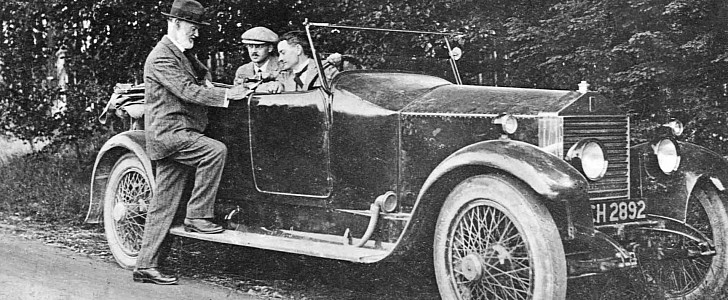This week, Rolls-Royce is celebrating the centenary of one of its models, the 20 H.P, which is affectionately known as the “Twenty.” The model had set the template for Rolls-Royce cars for the next three decades, and it was also the first to be designed as an owner-driver car, which mirrors today's product portfolio.
The idea was that the Twenty was designed to be easy to drive by its owner, without requiring a chauffeur to take care of the driving. Back then, at the dawn of the motorcar, the driver was also a part-time mechanic, and some vehicles needed constant tinkering to get going, run properly, and to ensure they still operated after they were stopped.
Rolls-Royce's leaders had figured out that there would be customers who do not want to get their hands dirty for every drive, so they designed a vehicle that could be operated with ease. It is not as easy to drive as one in the modern era, but for a vehicle that was made a century ago, it is considered easy to operate.
The Rolls-Royce 20 H.P. was the smallest model offered by the brand in its time, and it is the direct ancestor of the Ghost, but also of the Wraith, Dawn, and Cullinan.
The idea behind it was to have a smaller vehicle in the line-up after The Great War, as customers would have a tough time finding chauffeurs, as well as supporting the potentially costly weekly maintenance of a vehicle.
The Twenty was launched on October 6th, 1922, and it was described as a “small horsepower car.” It was offered with a 3.1-liter inline six motor that was half the size of the Silver Ghost's unit, which was a pre-war model that was, on average, 30 percent heavier.
Just like its predecessors, the Twenty was produced as a rolling chassis, which meant that customers would get to commission independent coachbuilders for the bodywork. Sadly, not everyone understood the philosophy of the 20 H.P., and many opted for large bodies, which dampened performance.
Despite this, the Rolls-Royce 20 H.P. was praised for its steering, suspension, and the smoothness of its running.” The model was considered a huge leap forward, and was appreciated for the light resistance opposed by its controls, which was something special at the time, and it took decades for attributes like these to trickle down to volume models.
Now, the British marque is adapting yet again to the market, and is planning to launch its first all-electric vehicle. From that perspective, the Spectre shares the Twenty's innovative spirit.
Rolls-Royce's leaders had figured out that there would be customers who do not want to get their hands dirty for every drive, so they designed a vehicle that could be operated with ease. It is not as easy to drive as one in the modern era, but for a vehicle that was made a century ago, it is considered easy to operate.
The Rolls-Royce 20 H.P. was the smallest model offered by the brand in its time, and it is the direct ancestor of the Ghost, but also of the Wraith, Dawn, and Cullinan.
The idea behind it was to have a smaller vehicle in the line-up after The Great War, as customers would have a tough time finding chauffeurs, as well as supporting the potentially costly weekly maintenance of a vehicle.
The Twenty was launched on October 6th, 1922, and it was described as a “small horsepower car.” It was offered with a 3.1-liter inline six motor that was half the size of the Silver Ghost's unit, which was a pre-war model that was, on average, 30 percent heavier.
Just like its predecessors, the Twenty was produced as a rolling chassis, which meant that customers would get to commission independent coachbuilders for the bodywork. Sadly, not everyone understood the philosophy of the 20 H.P., and many opted for large bodies, which dampened performance.
Despite this, the Rolls-Royce 20 H.P. was praised for its steering, suspension, and the smoothness of its running.” The model was considered a huge leap forward, and was appreciated for the light resistance opposed by its controls, which was something special at the time, and it took decades for attributes like these to trickle down to volume models.
Now, the British marque is adapting yet again to the market, and is planning to launch its first all-electric vehicle. From that perspective, the Spectre shares the Twenty's innovative spirit.






